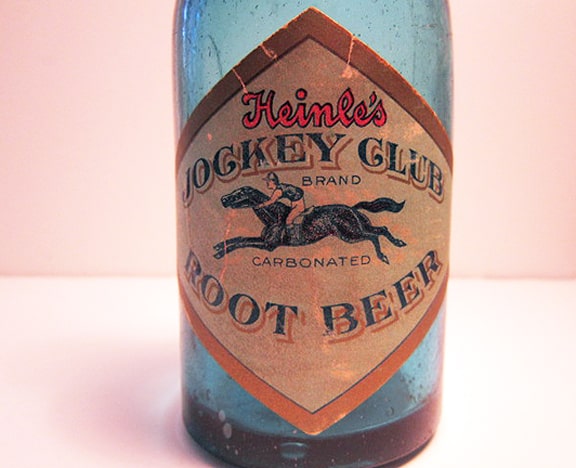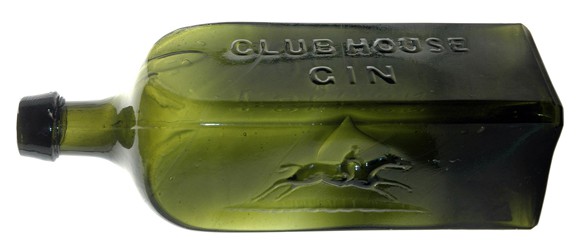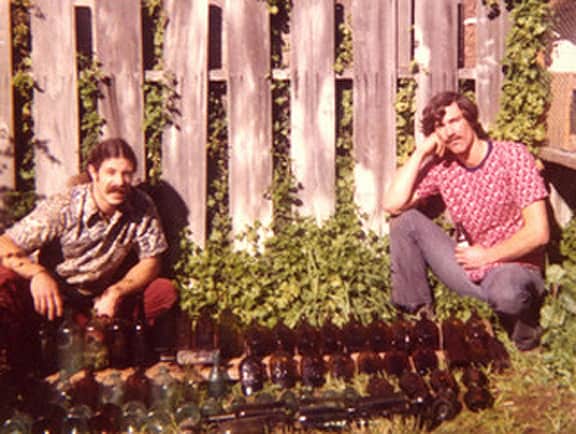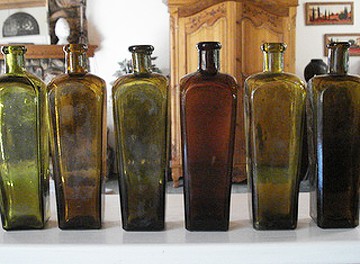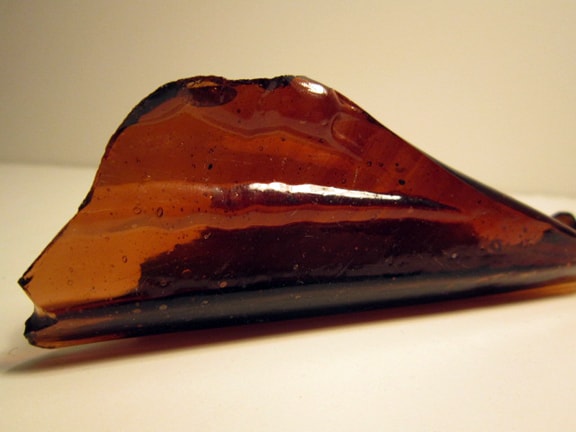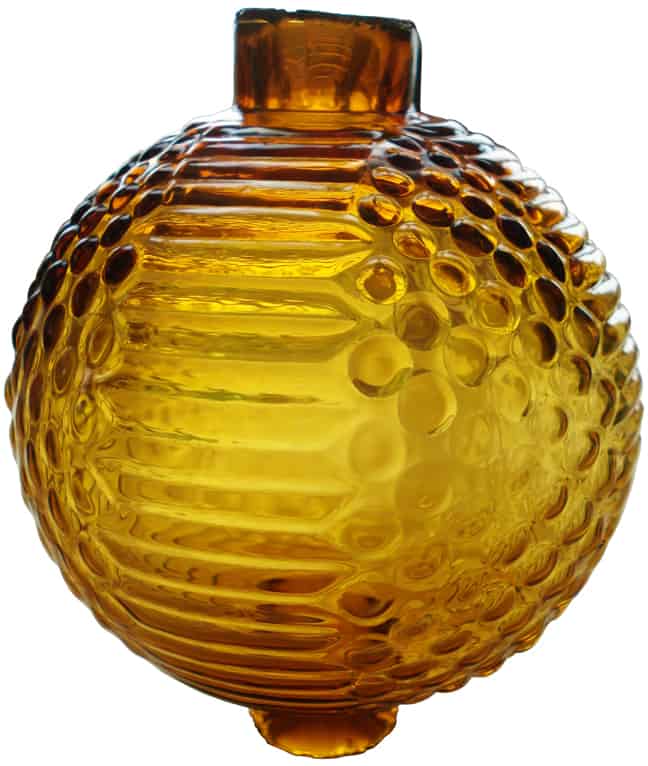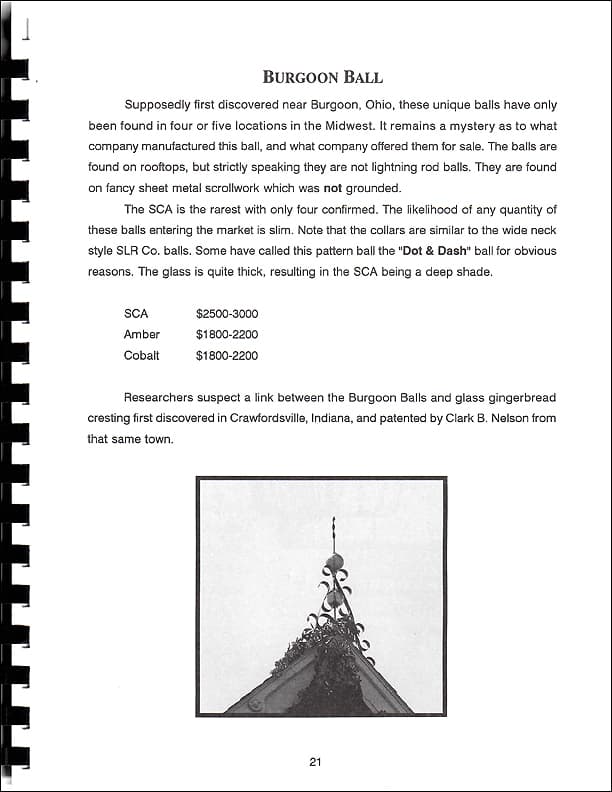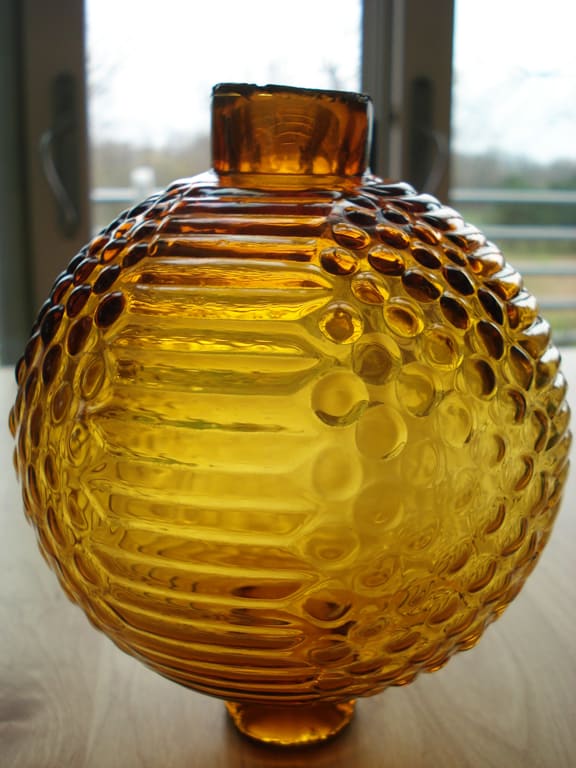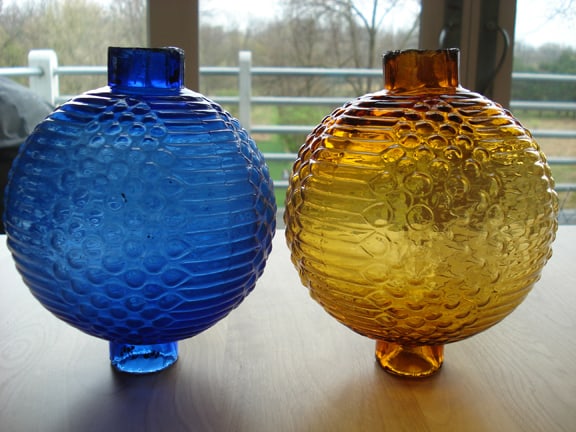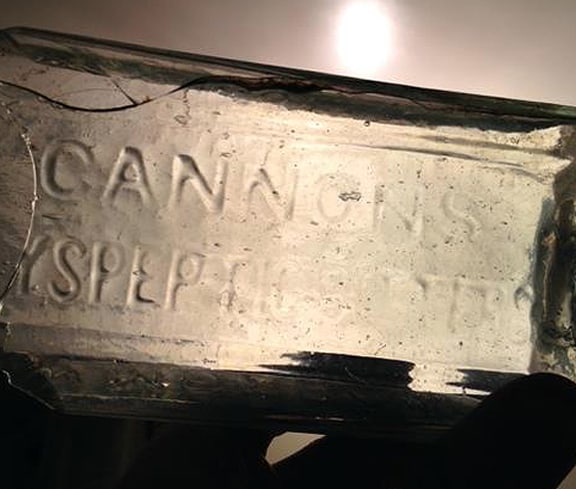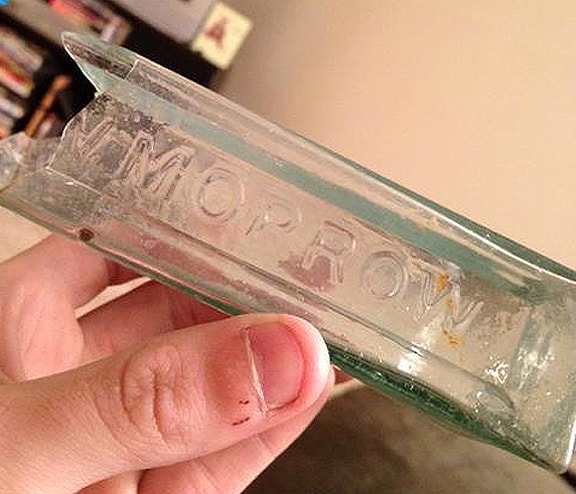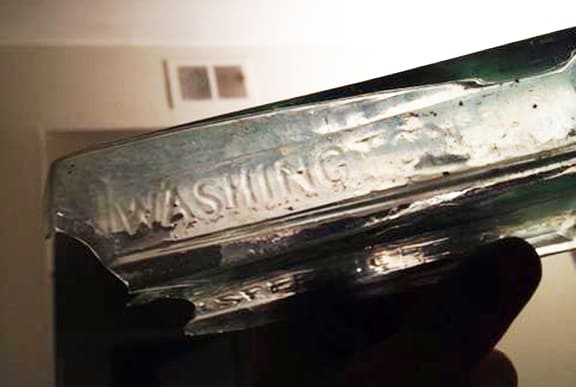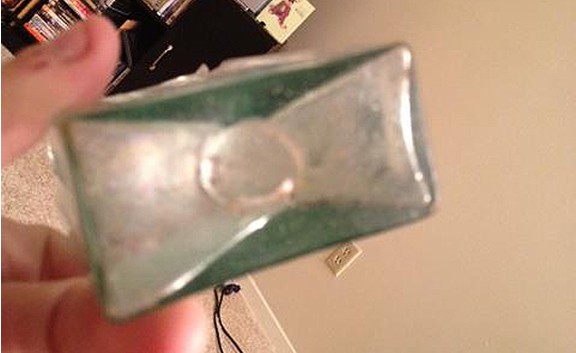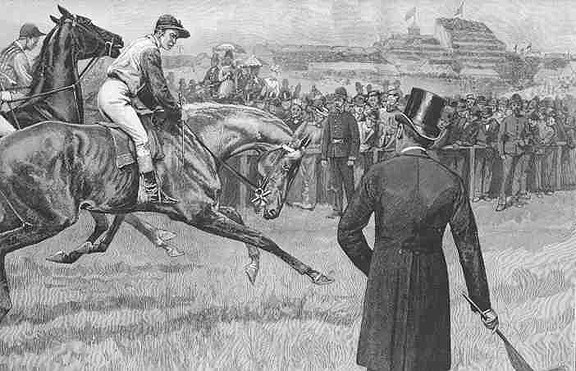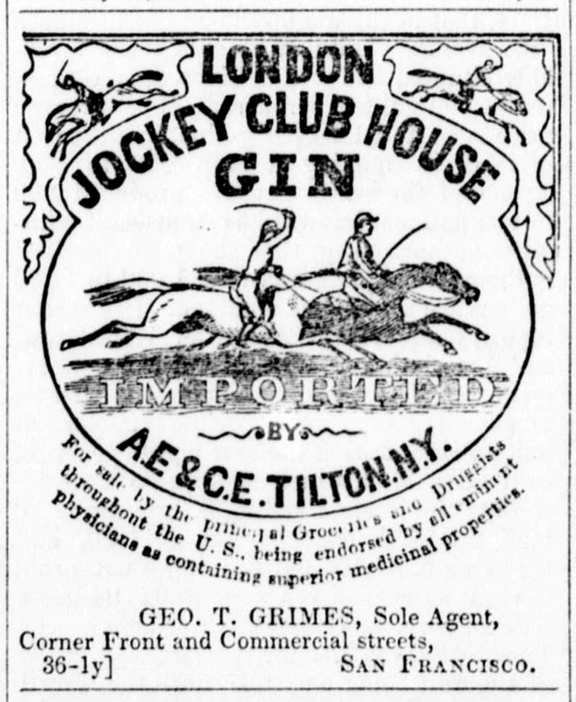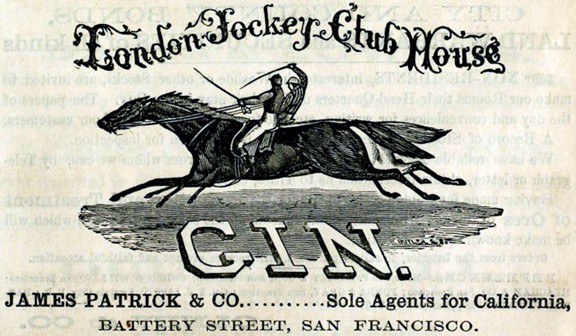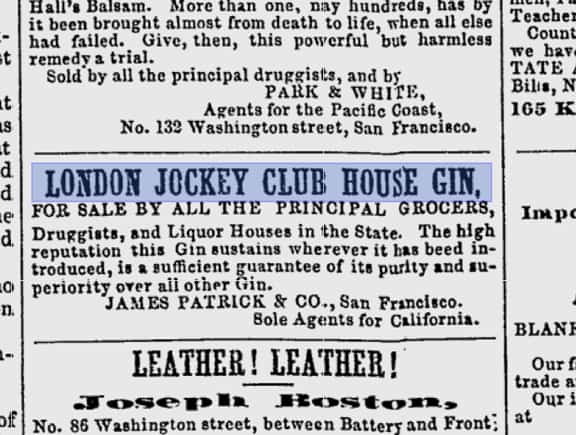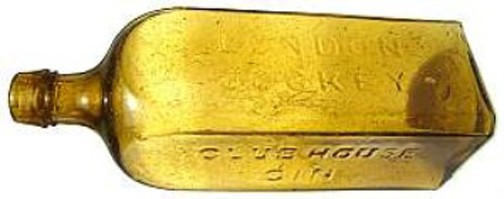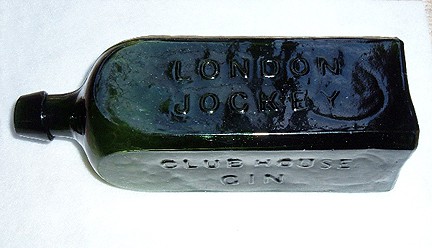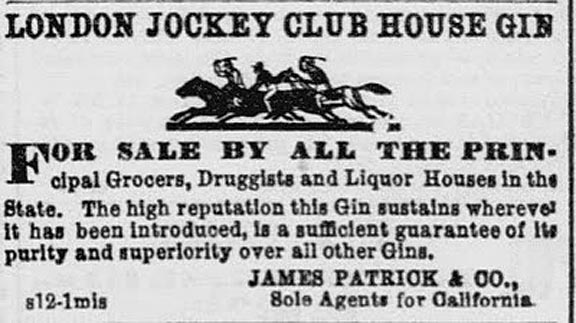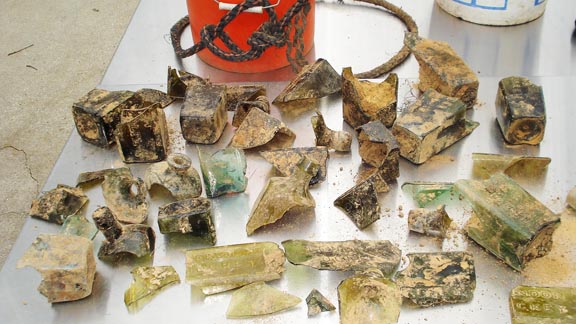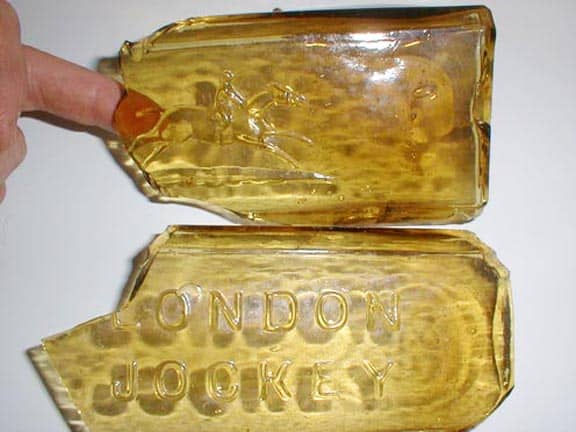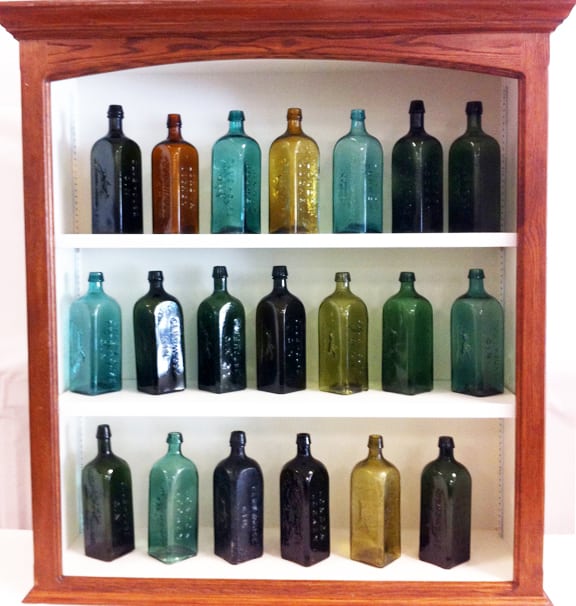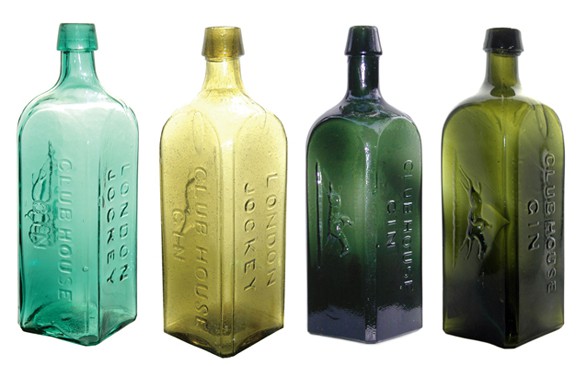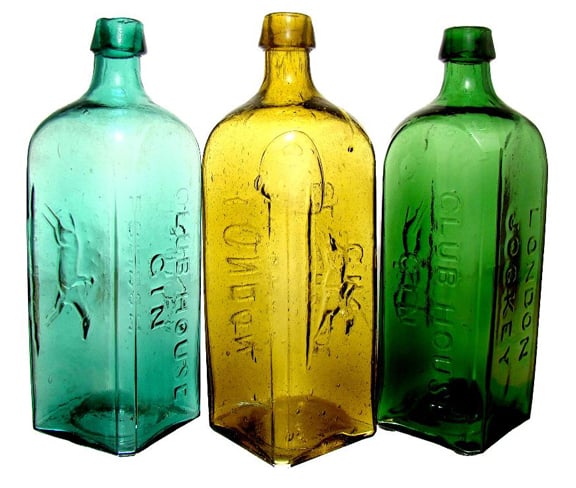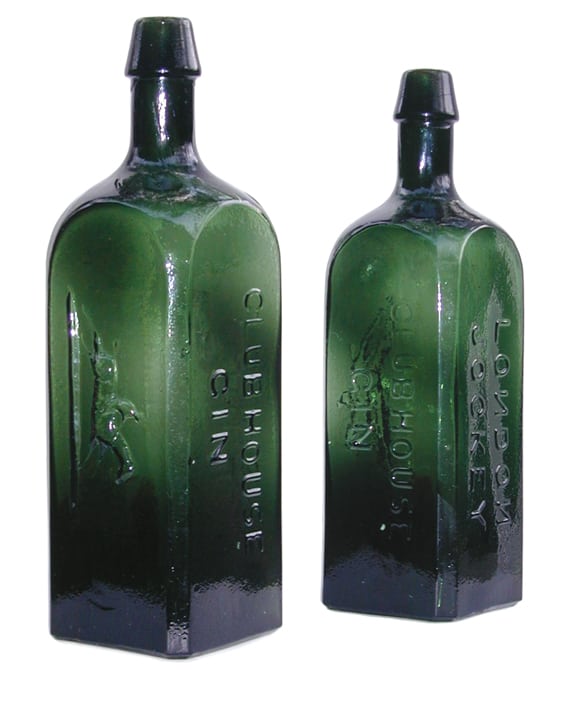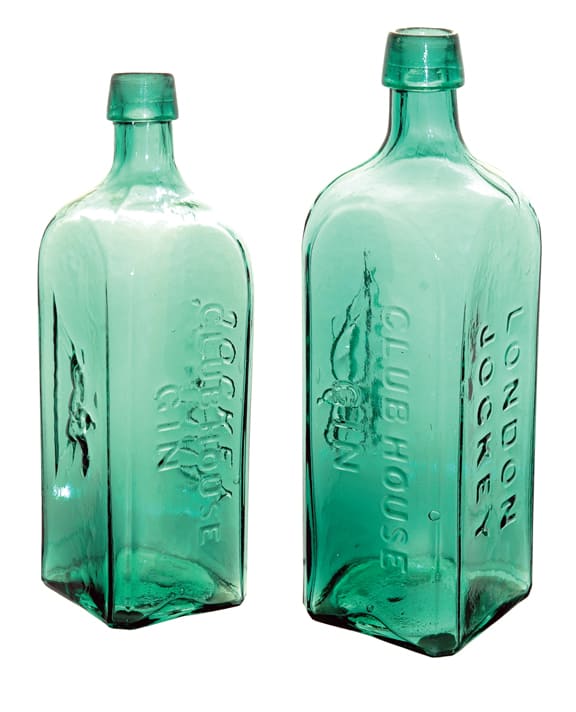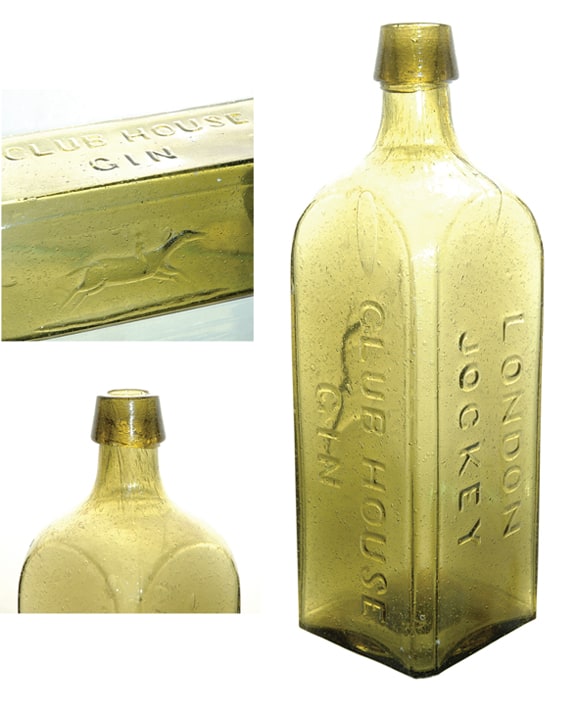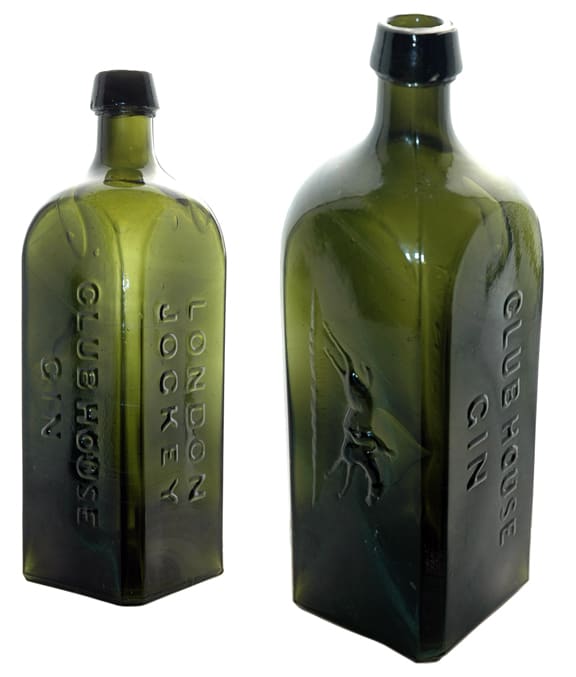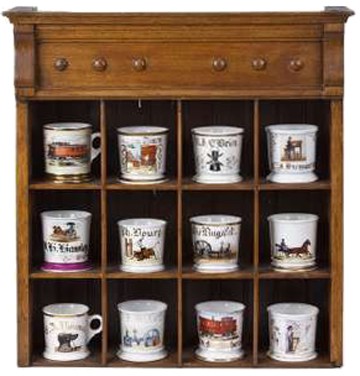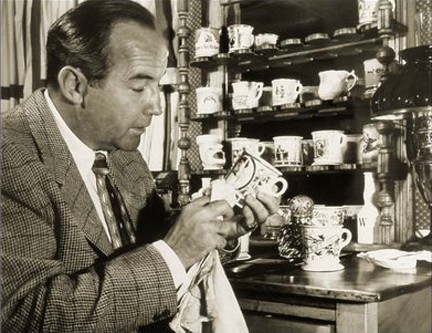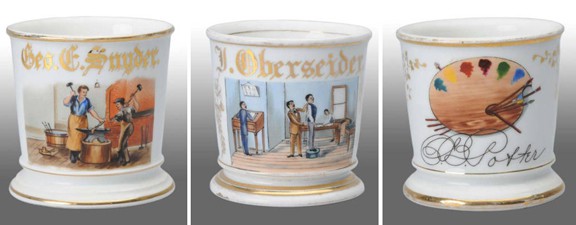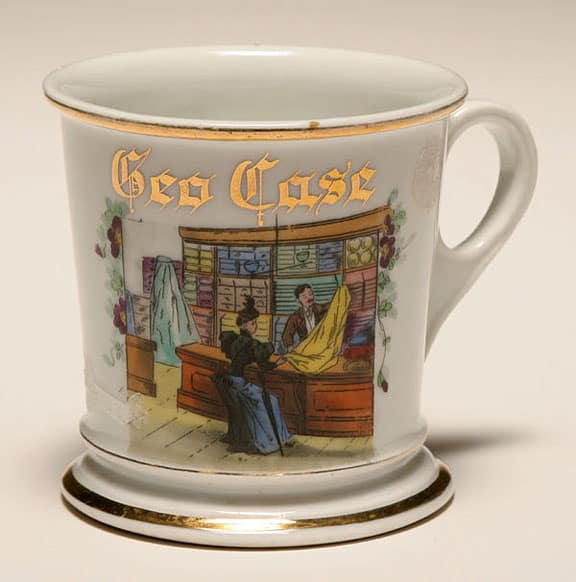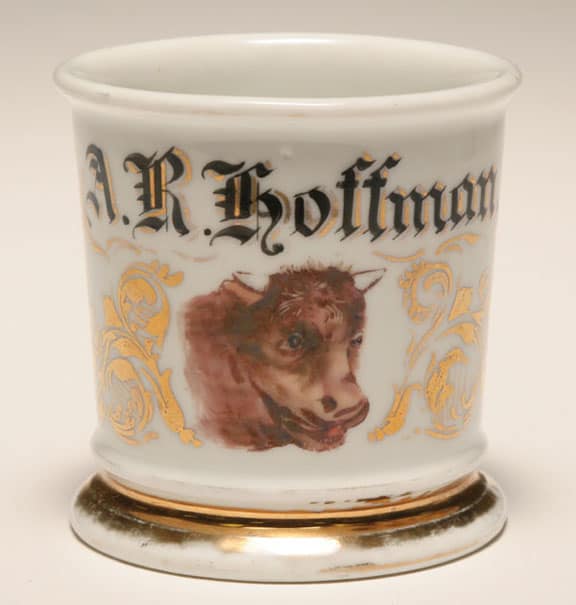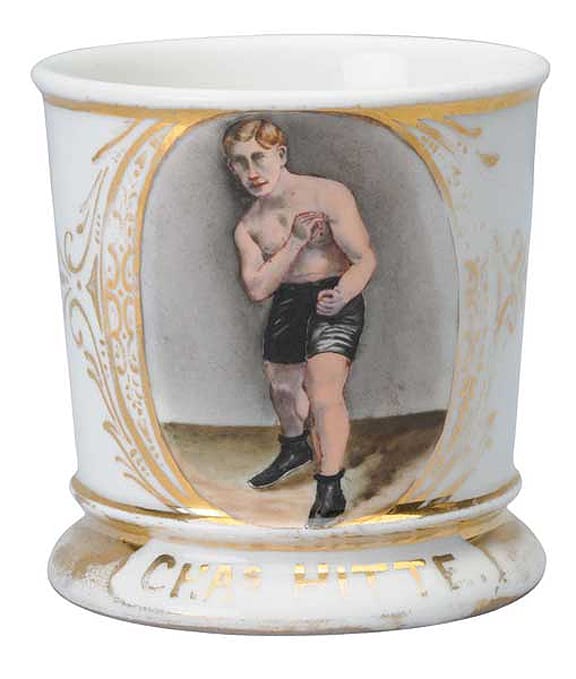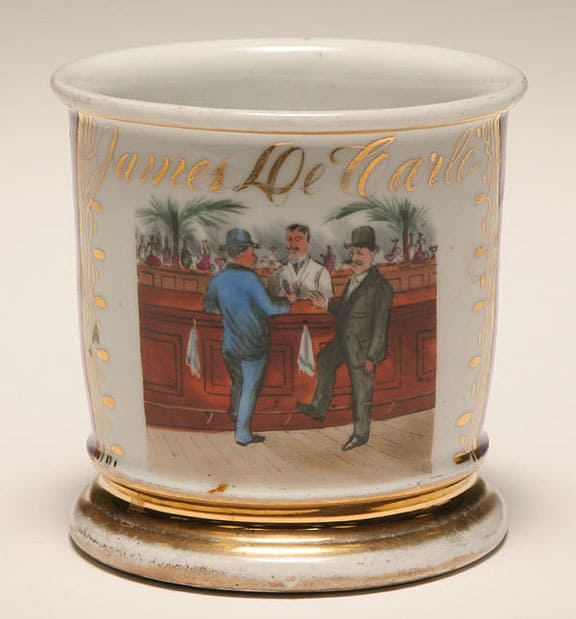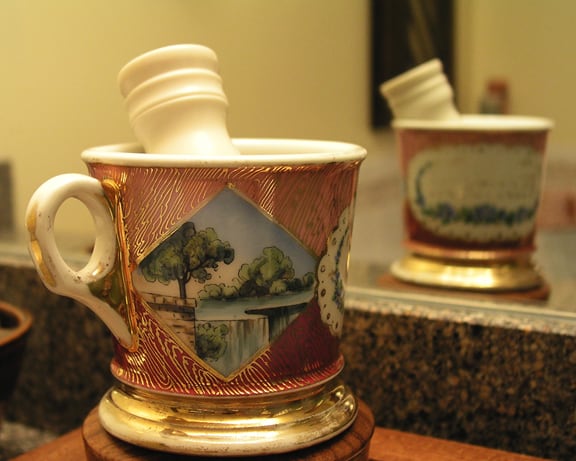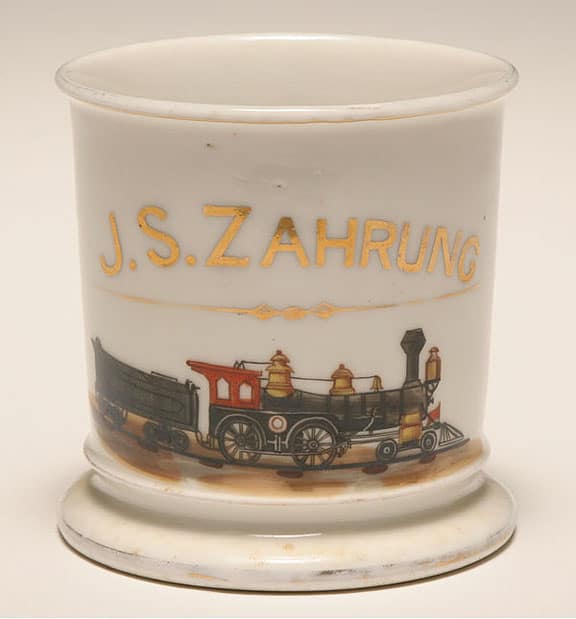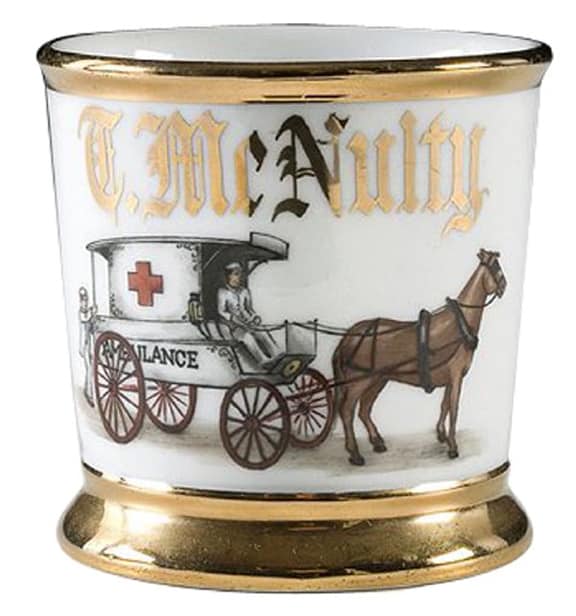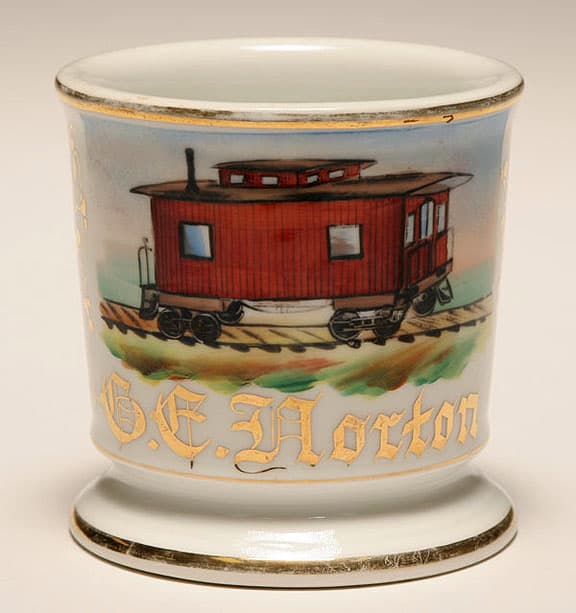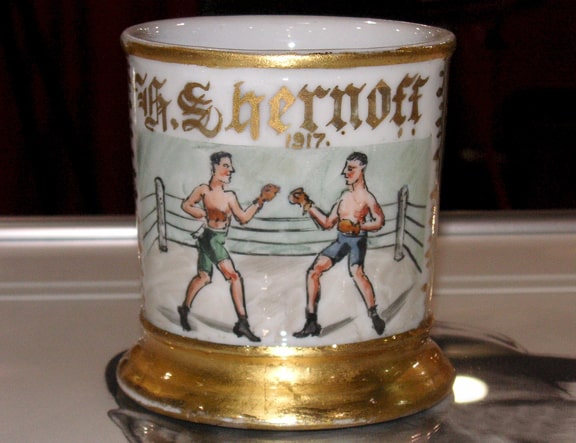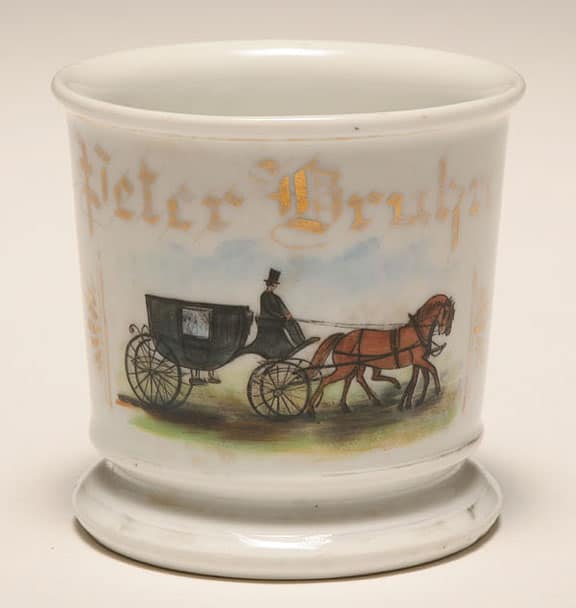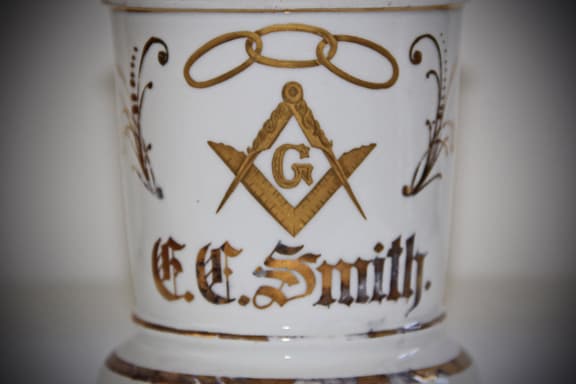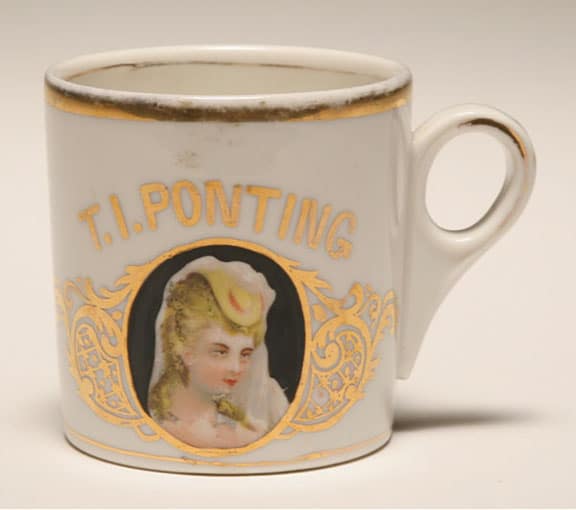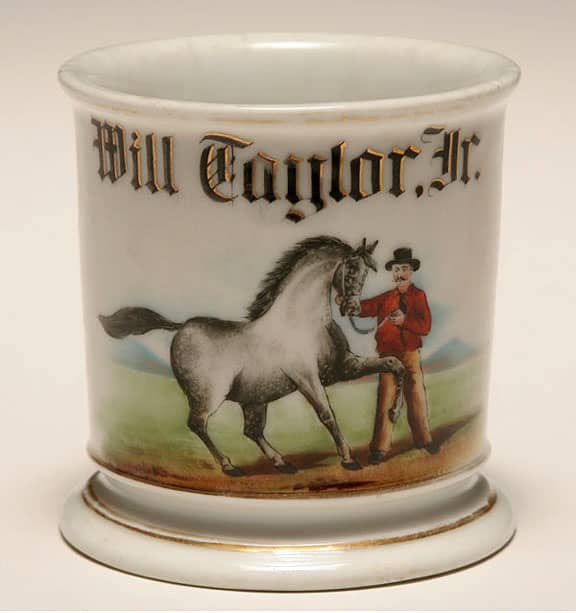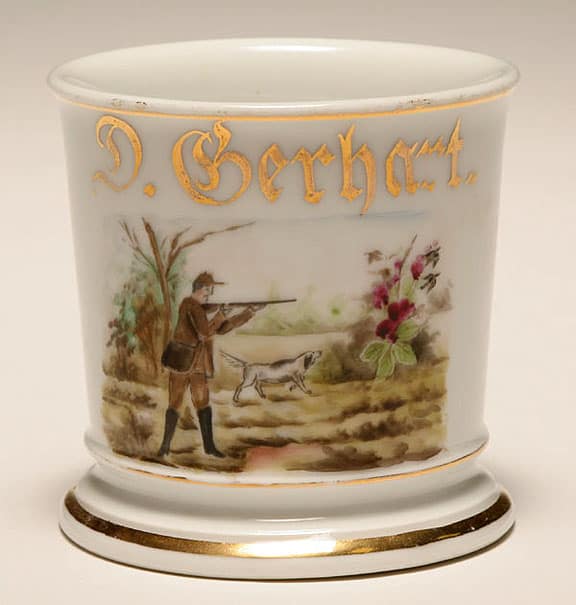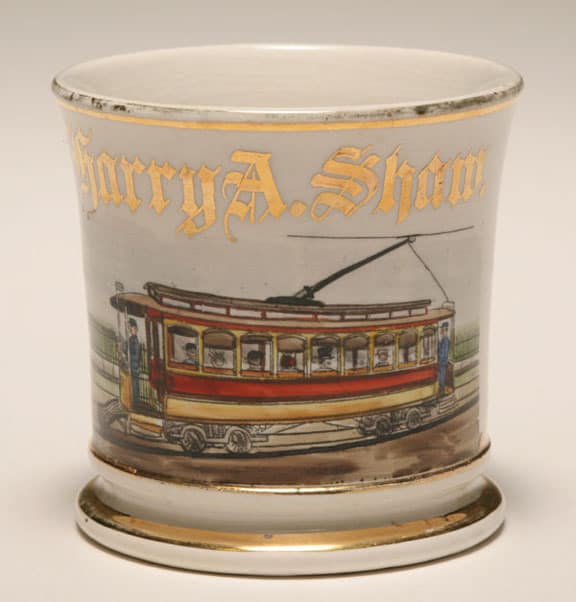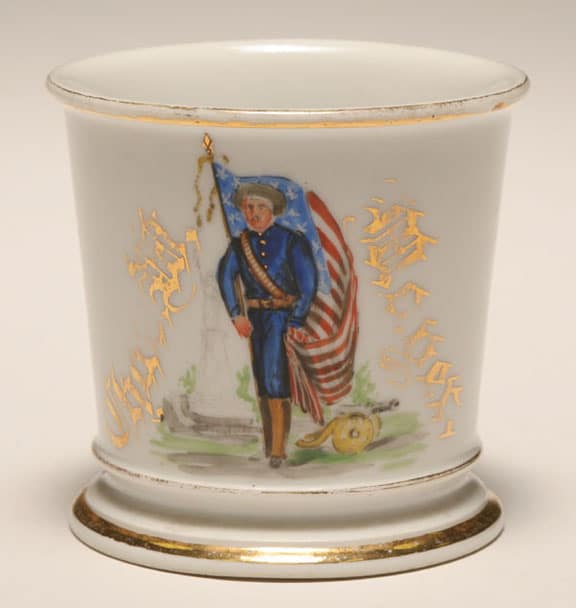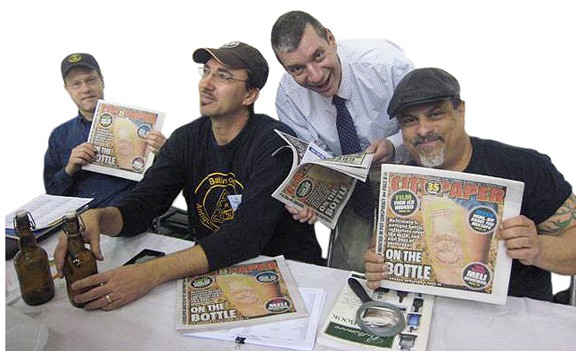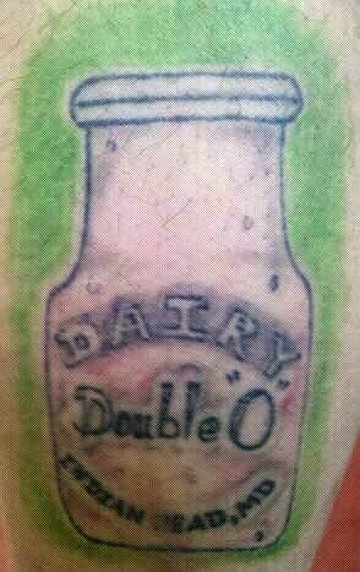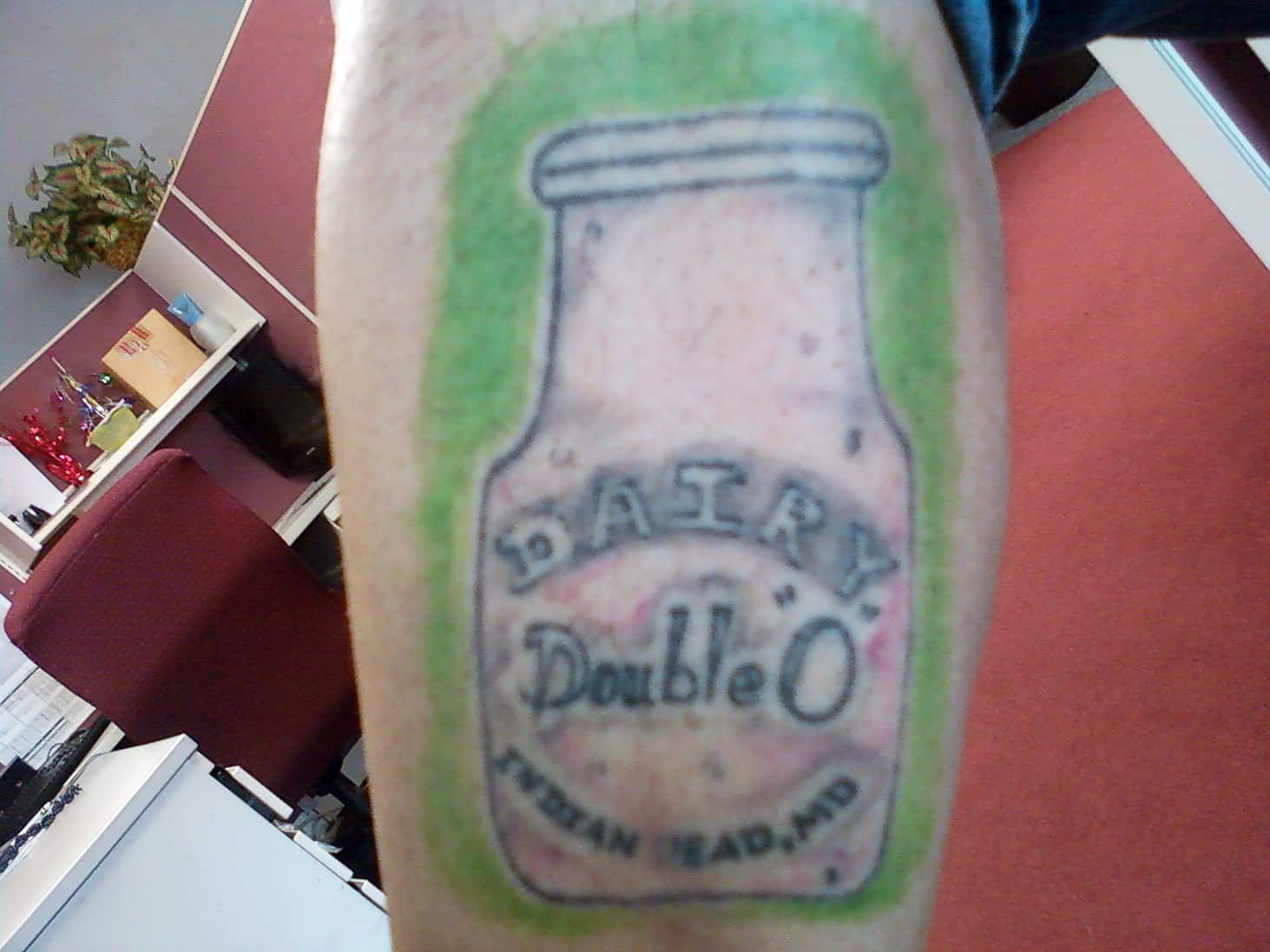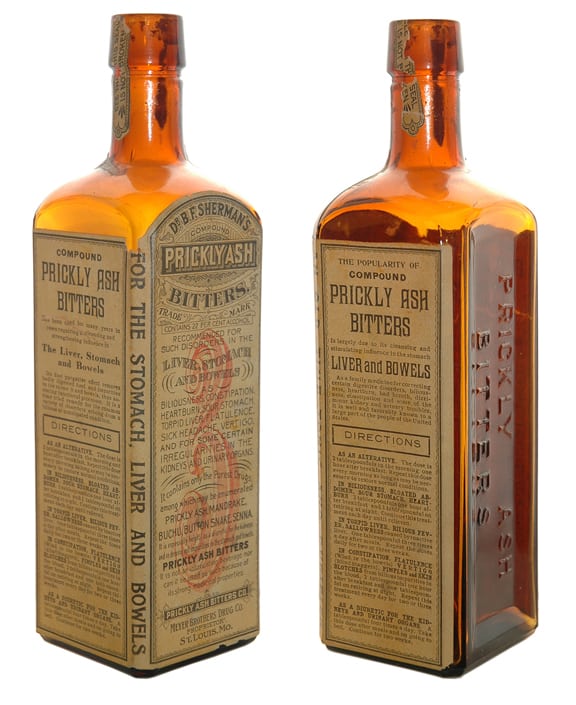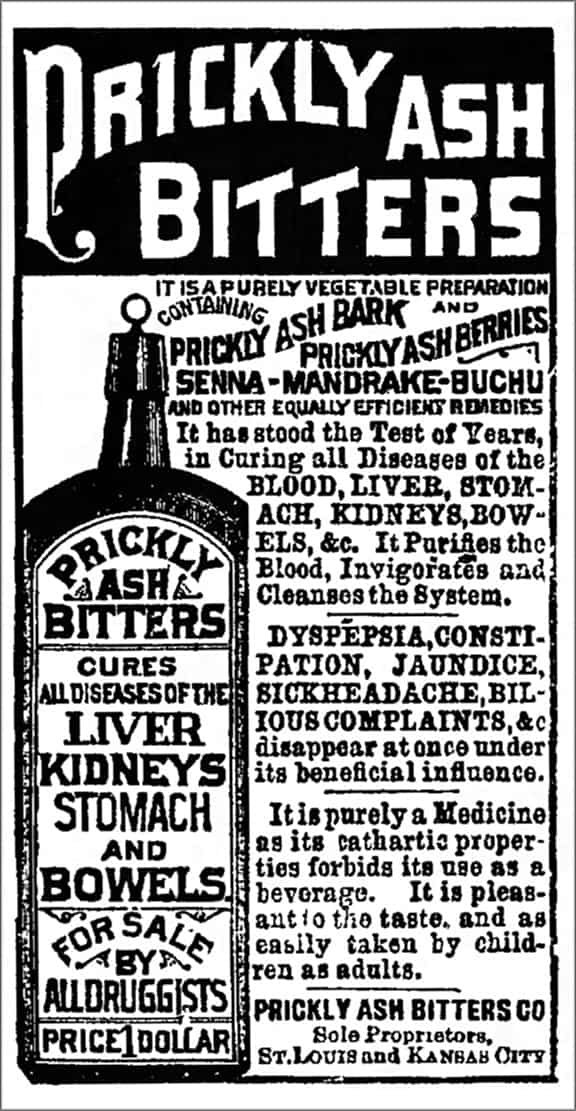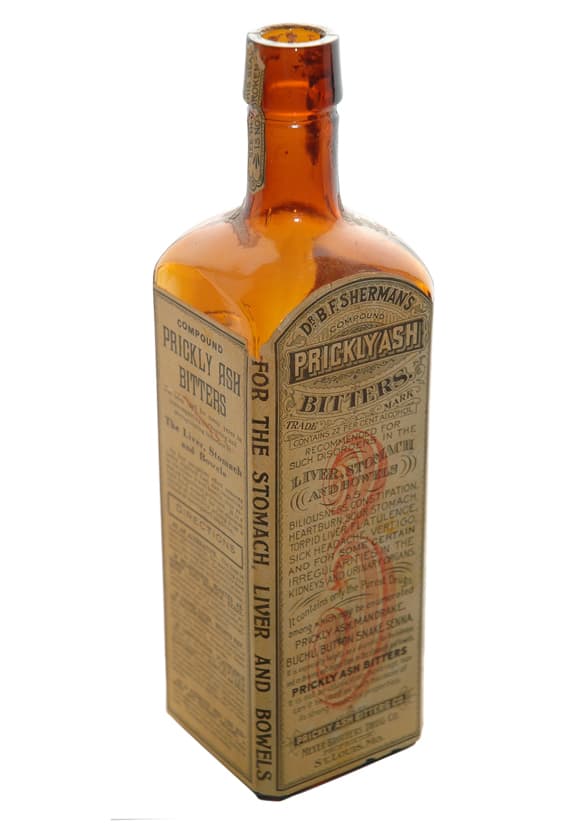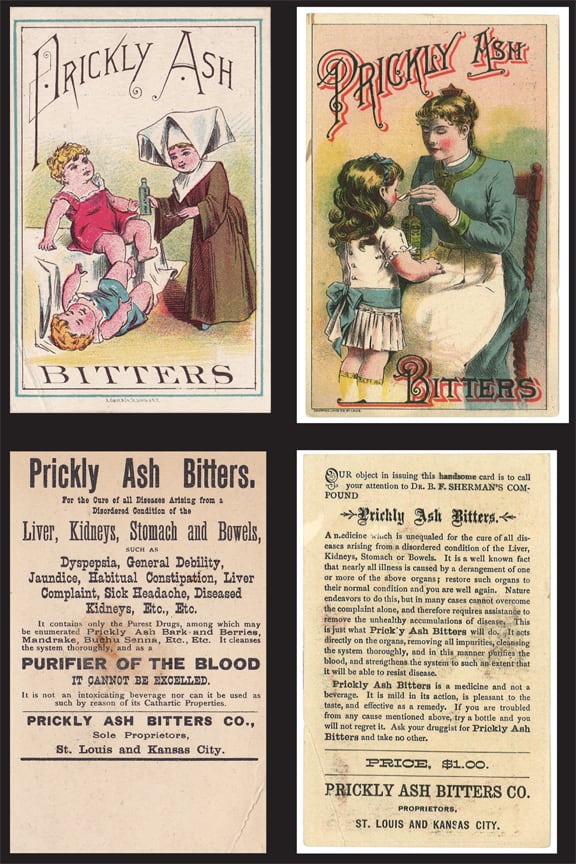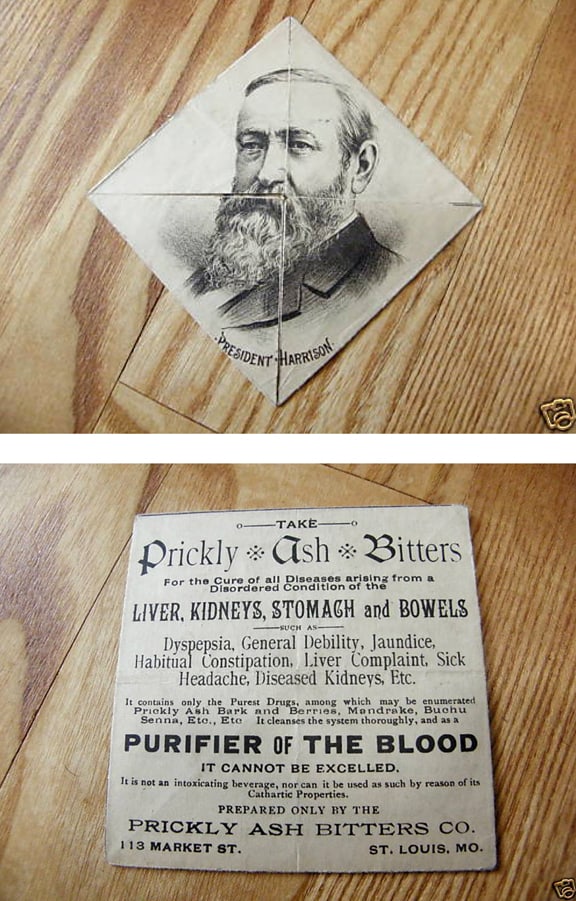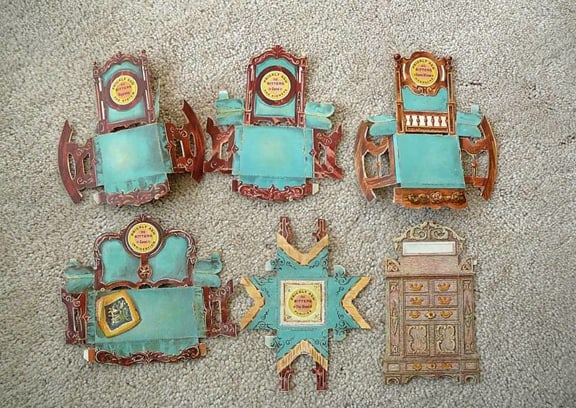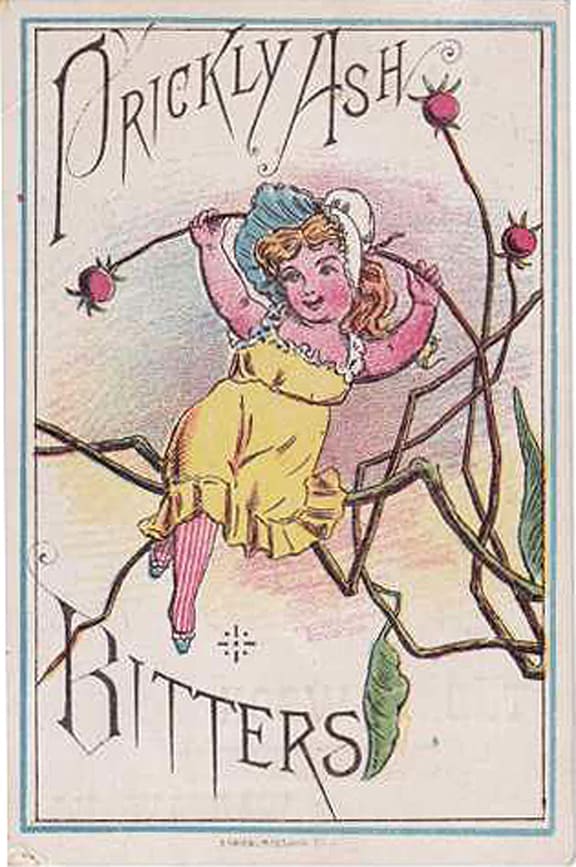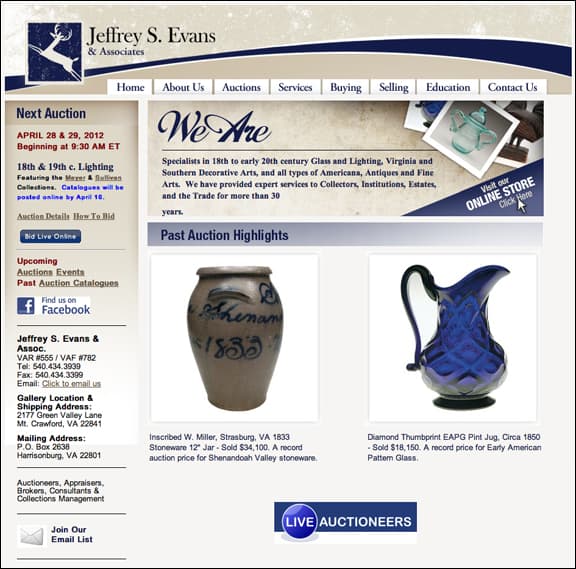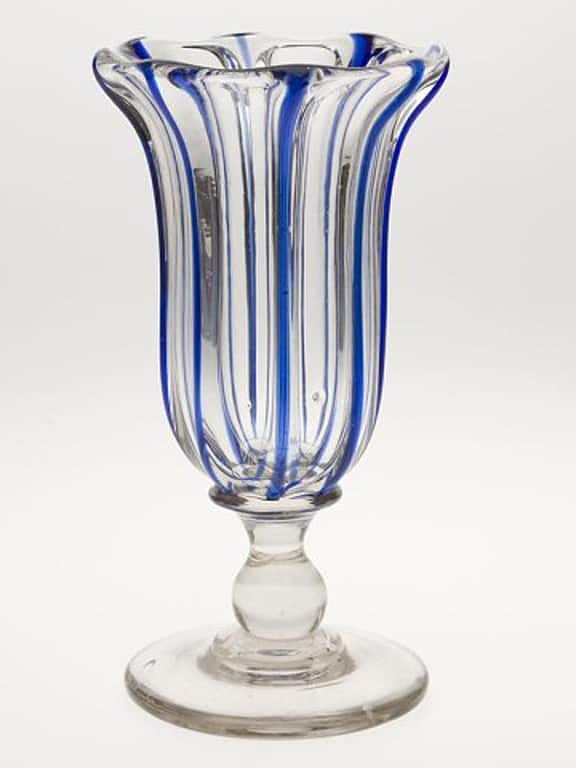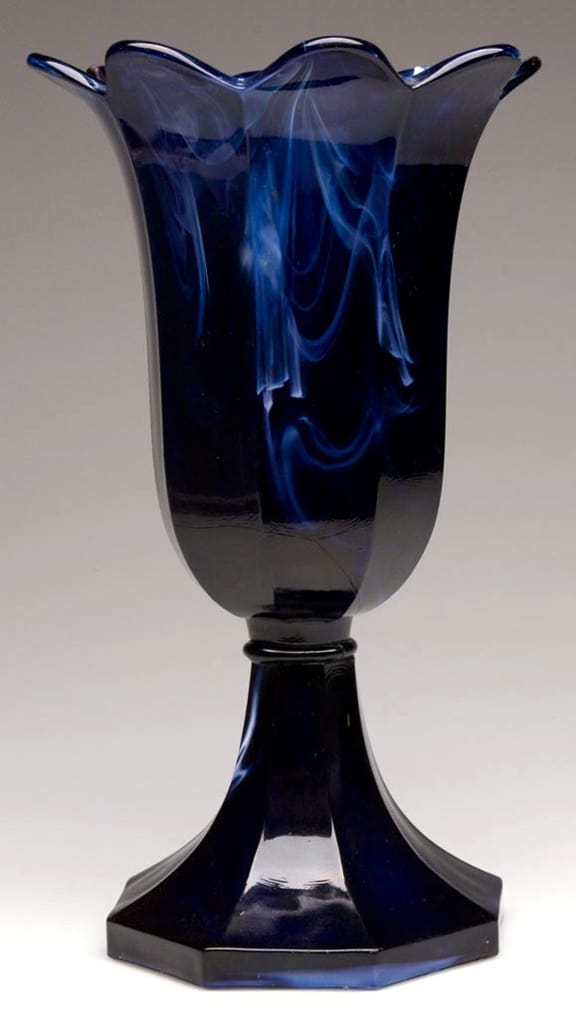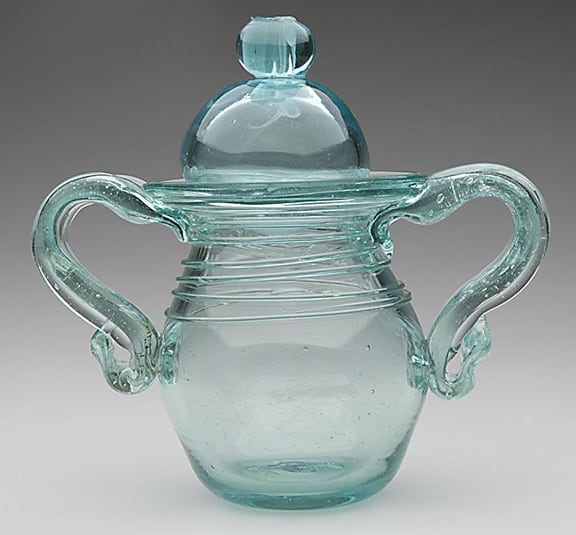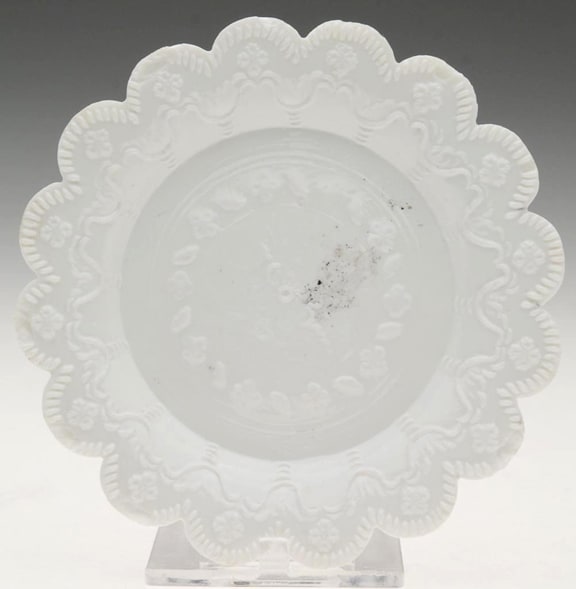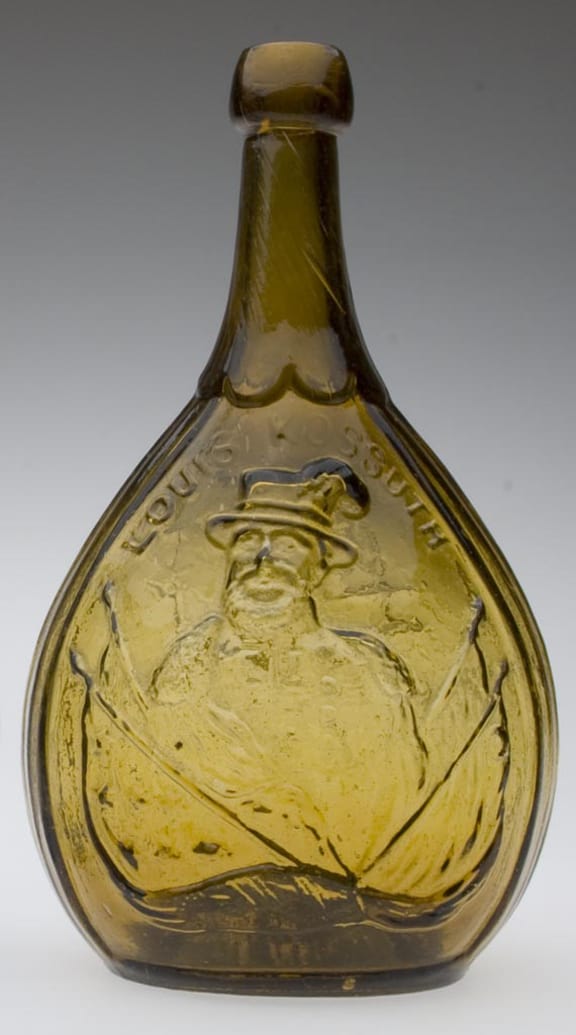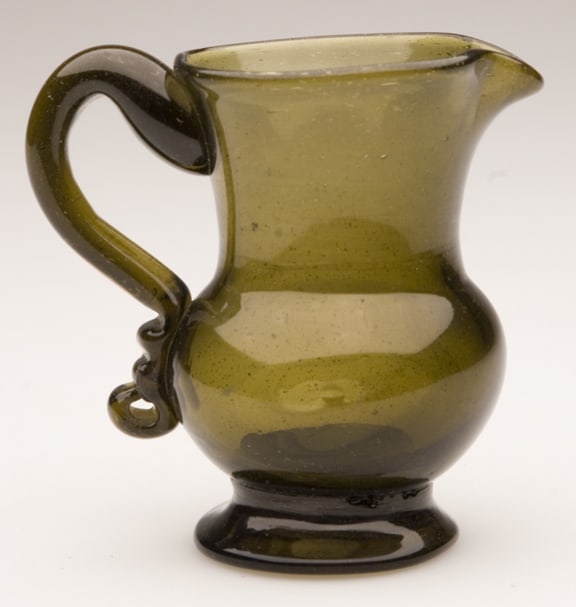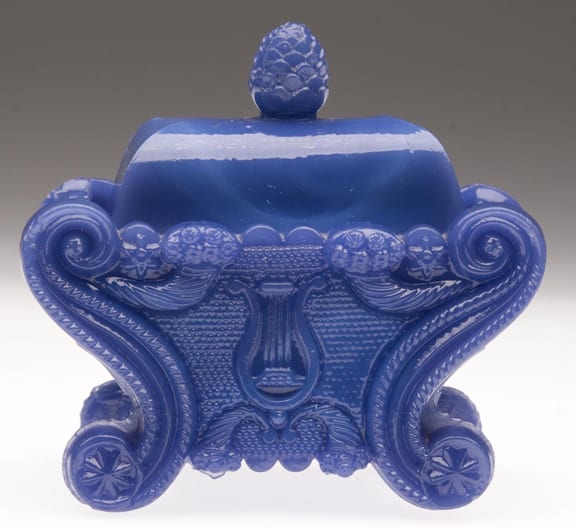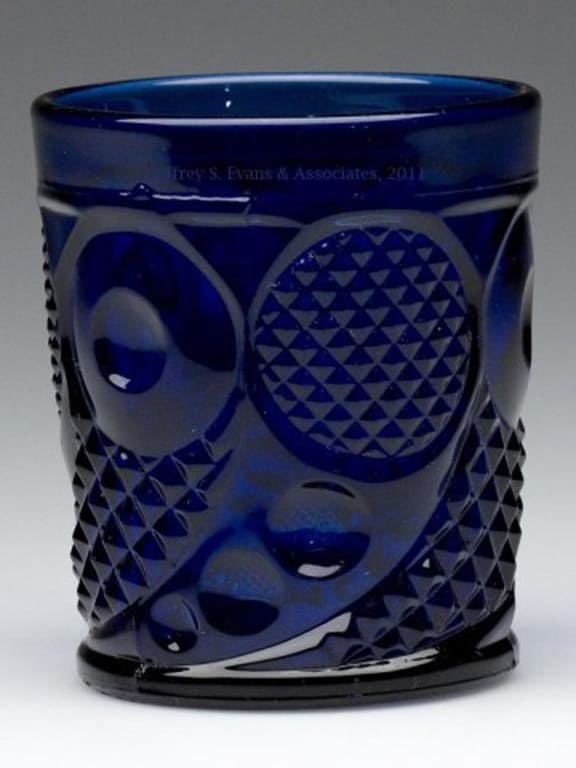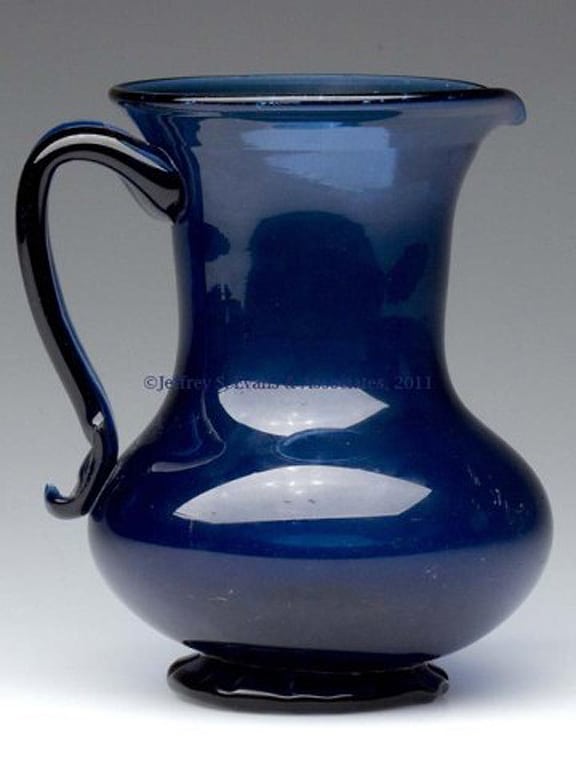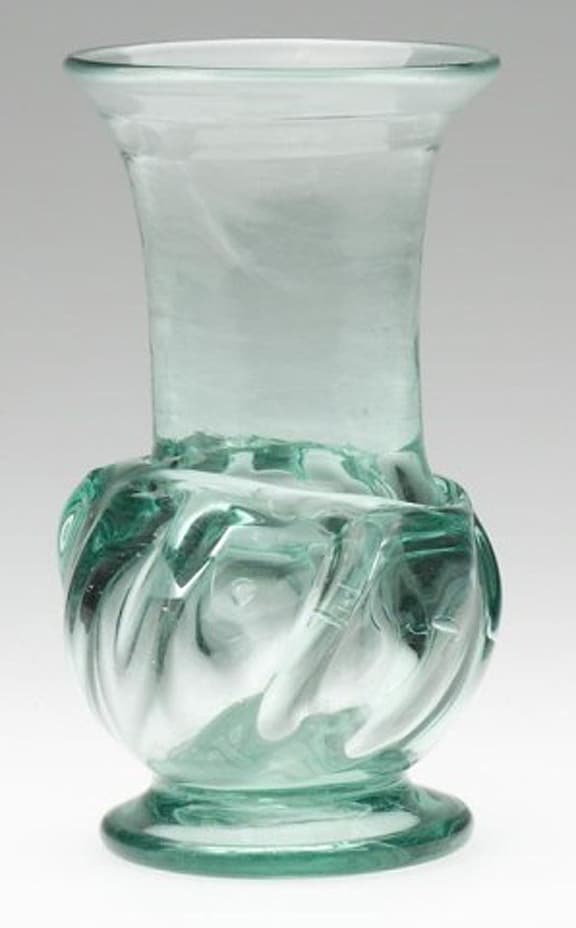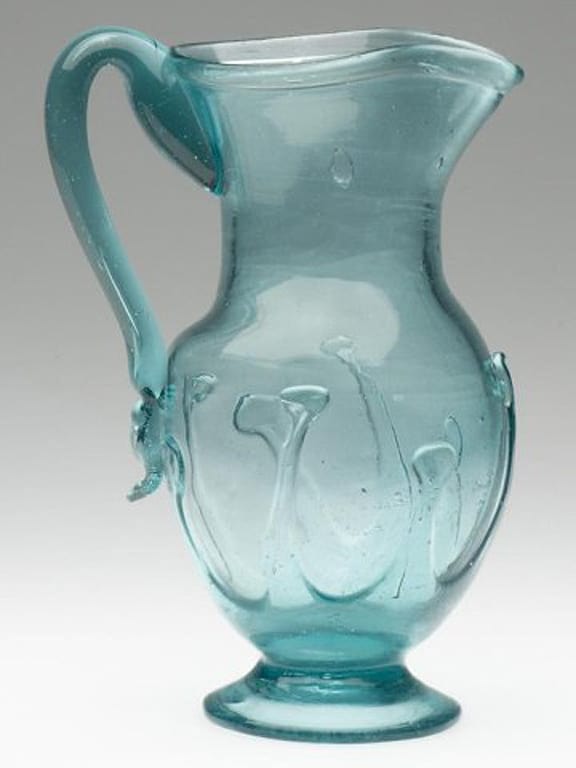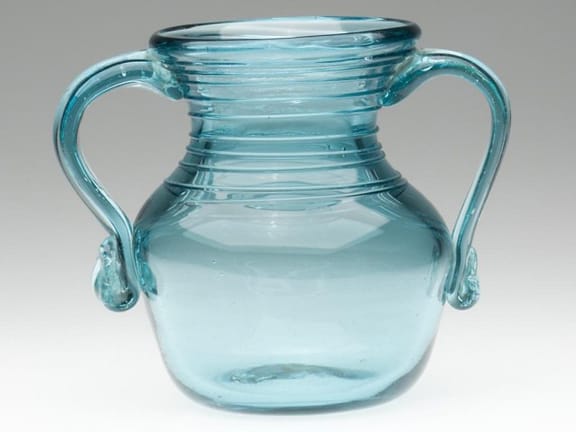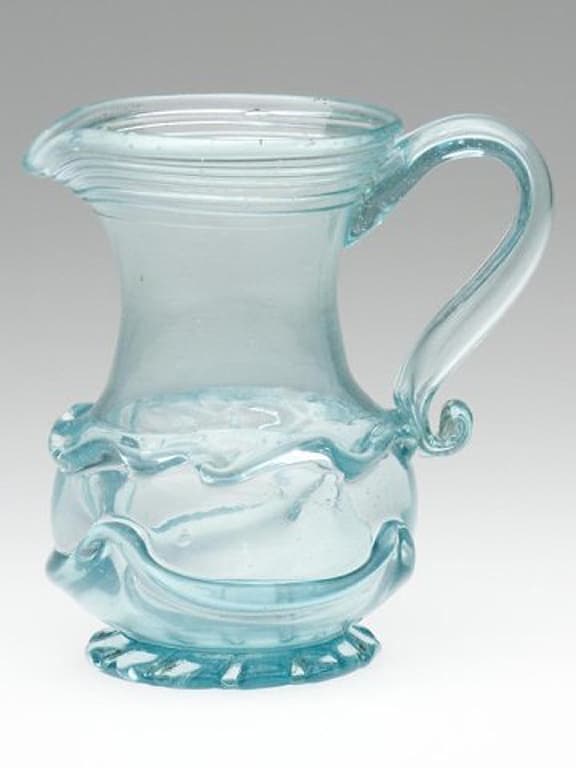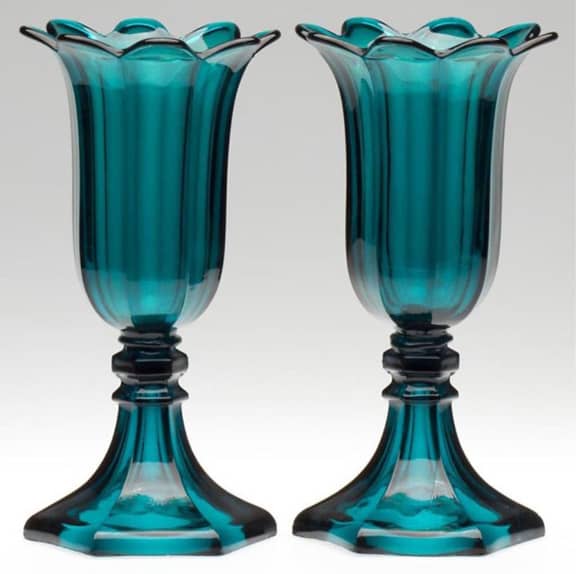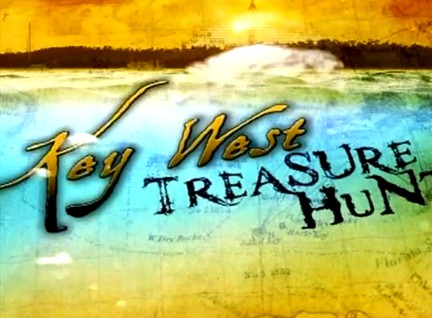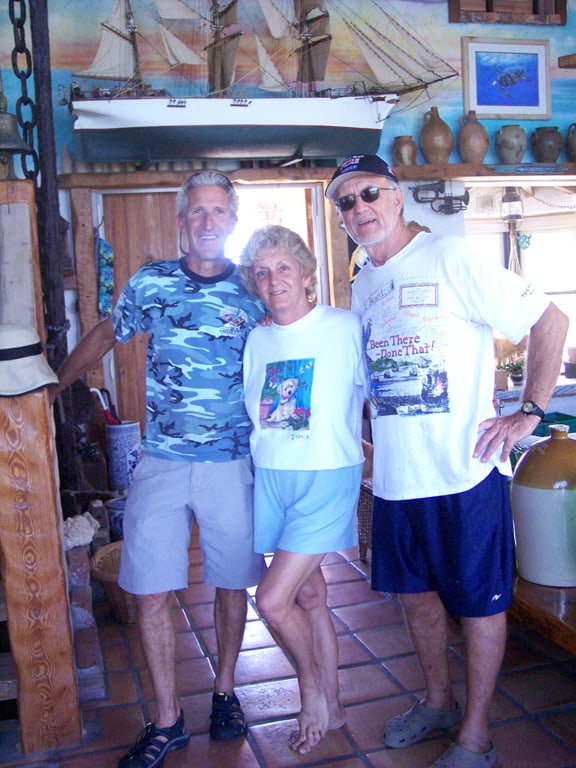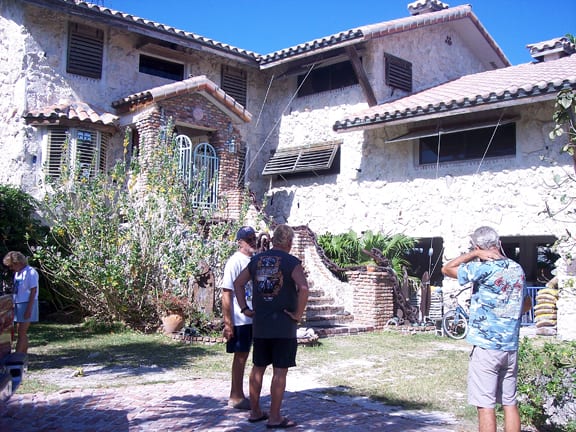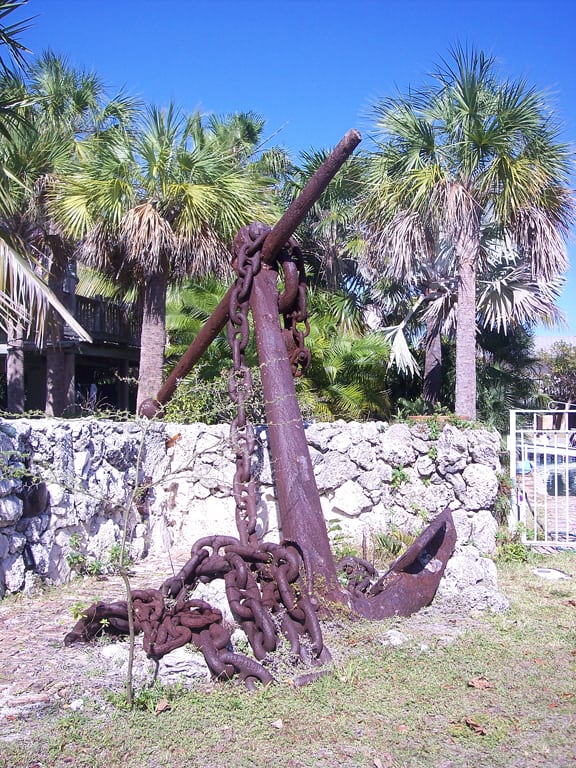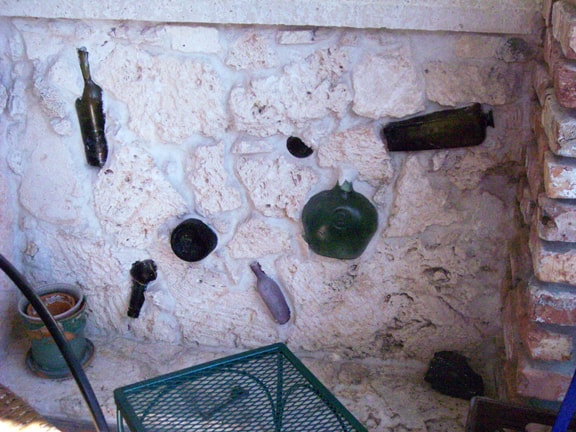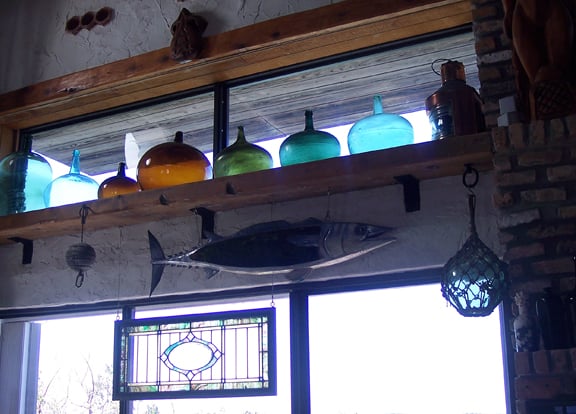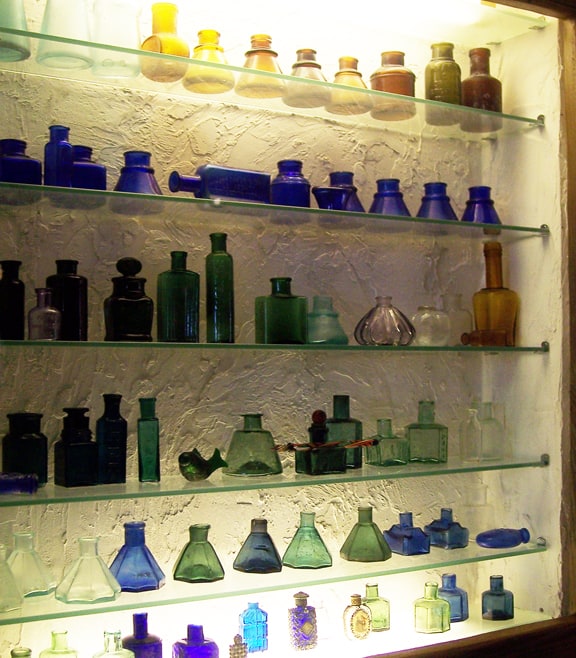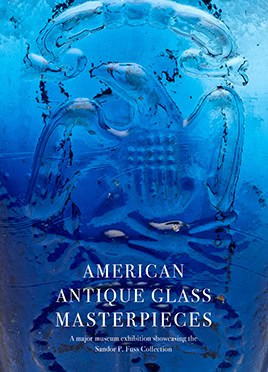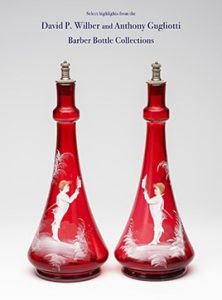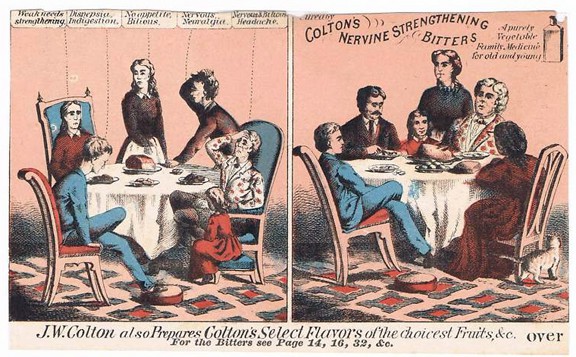
J.W. Coltons Nervine Strengthening Bitters Trade Card – Meyer Collection
J. W. Coltons Nervine Strengthening Bitters & Trade Card
15 April 2012 (R•053014)
 I was looking around eBay yesterday and eventually hit my bookmarked section on Trade Cards. I saw the usual cards, many being Burdock Blood Bitters but one card jumped out for a couple of reasons. The first was the strange illustration, the second was that it was for a neat Bitters bottle I possess and the third, I did not have it. I quickly purchased it using the Buy it Now option so I could study the illustration and do a post on J.W. Coltons Strengthening Bitters.
I was looking around eBay yesterday and eventually hit my bookmarked section on Trade Cards. I saw the usual cards, many being Burdock Blood Bitters but one card jumped out for a couple of reasons. The first was the strange illustration, the second was that it was for a neat Bitters bottle I possess and the third, I did not have it. I quickly purchased it using the Buy it Now option so I could study the illustration and do a post on J.W. Coltons Strengthening Bitters.
Finding Trade Cards, Advertising and other related material greatly increases the changes of really understanding the product and the name behind it.
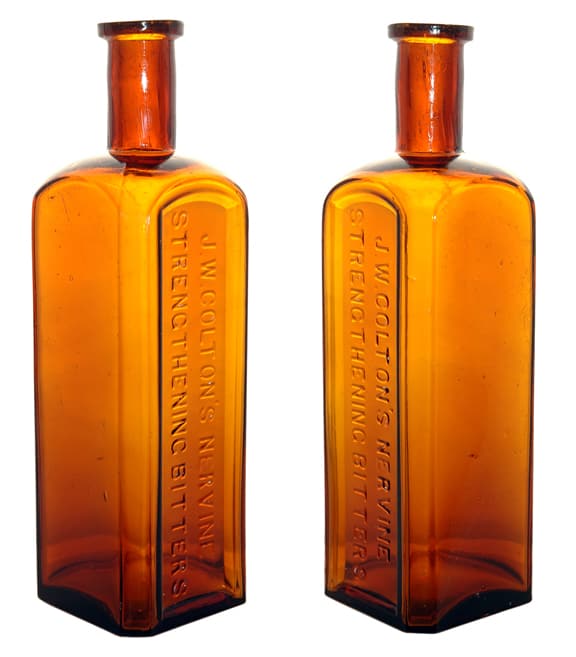
J.W. Coltons Nervine Strengthening Bitters – Meyer Collection
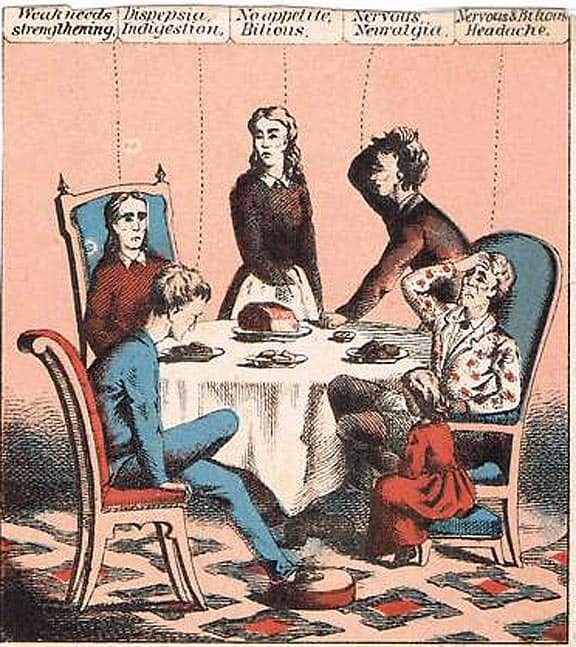
The ‘before’ illustration {left panel of Coltons trade card)
I have enlarged the left panel of the trade card (pictured above) to show the six sickly people in the family suffering from a who slew of ailments that are written in clouds above their heads and connected by dashed lines. This includes:
“Weak needs strengthening”, “Dispepsia, Indigestion”, No appetite, Bilious”, Nervous Neuralgia” and ‘Nervous Bilious Headache”
Look at this family, I am really feeling sorry for them now. And what about the little girl in the red dress? Why are they sitting around a dining table centered with a what looks like a meat loaf? Are those oysters that they just ate for appetizers? Maybe they were tainted.
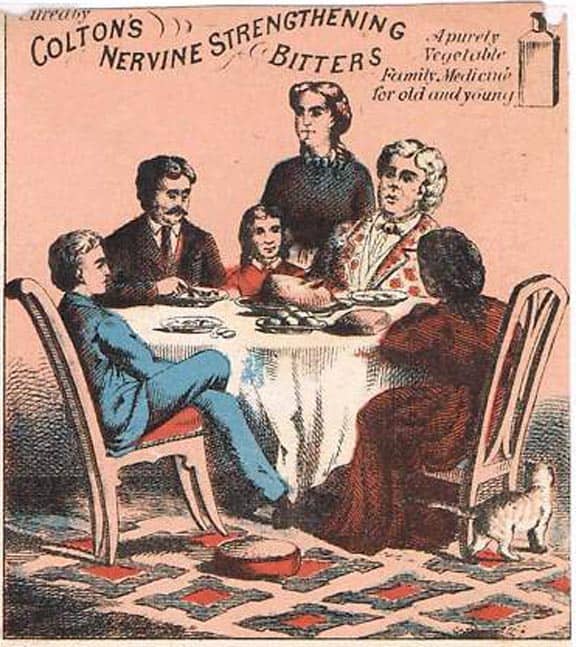
The ‘after’ illustration {right panel of Coltons trade card)
Now look at the right panel of the trade card (pictured above). Wow, what a difference. Even the meat loaf turned into a ham and the cat came out! There are a few obvious things about the second illustration such as the young lad in the blue suit. He has made a remarkable recovery from his Dispepsia and Indigestion’. He doesn’t even need the round foot stool anymore and has the strength and confidence to lean back in his chair. Now look at grandmother or the guy in the dotted coat. What a character and recovery. I would go so far and say he or she took too much and suggest that they not wear that outfit for another family dinner. Now is that the father? Where was he before? Why does the little girl just watch. She is obviously getting bigger. Also momma is very happy because her purchase of Coltons Strengthening Bitters saved her family and cooking.
As typical with any Bitters bottle, I start with Bitters Bottles by Carlyn Ring and W.C. Ham. The following was recorded for the Coltons.
C 197 COLTONS NERVINE STRENGTHENING BITTERS
J. W. COLTON’S NERVINE / STRENGTHENING BITTERS // f // f // f //
// b // WT & CO
Prepared by J. W. Colton Chemist Westfield, Mass and New York
8 3/8 x 2 1/2 (6 1/8) 3/8
Square, Amber, NSC, Tooled lip, 1 sp, Scarce,
Label: Colton’s Nervine Strengthening Bitters or Tonic Elixir carefully prepared from calisays and Peruvian barks, golden seal, wormwood, valerias and others of the best vegetable medicines. A pure vegetation tonic. A great appetizer, strengthener and regulator of the bilious nervous, dyspeptic & weak.
Select Date Listings
Westfield Souvenir 1906: J. W. Colton made pure extracts and all kinds of flavors in Westfield for 45 years; and was at the same address doing business for 25 years. All drug preparations were made by Mr. Colton himself and have been very successful. In 1906, the New York office was 6 Harrison Street. Mr. J. W. Colton was president, and Mr. William Barton was treasurer and manager. In 1903 the company was reorganized and incorporated.
Dewey & Parsons, druggists were Colton’s successors in 1888. Dewey & Parsons became T. J. Dewey, Jr. & Co. in 1910.
Almanac 1883: J. W. Colton’s Choice Cooking Recipes. Select Flavors and Preparations Sold by R. S. Brown, East Granville, Mass.
The Springfield Union Almanac 1876: J. W. Colton & Stratton, Wholesale & Retail Druggists & Apothecaries Family Medicine & Prescription Store Corner Elm & School Sts.,Westfield, Mass
Drug Catalogs: 1876-7, 1880 and 1885 & 1892 Goodwin
Trade Cards Available
Also manufacture of Colton’s Select Flavors and toilet waters.

Colton’s Select Flavors Advertisement
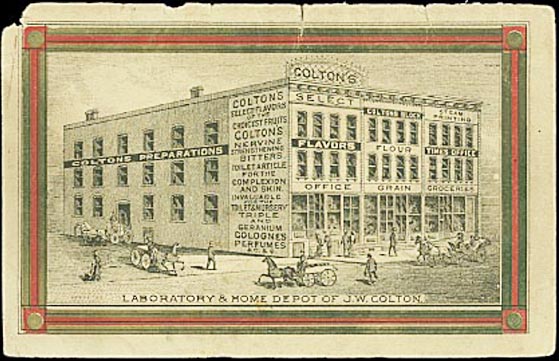
Laboratory & Home of Colton’s Nervine Bitters, Detached front cover of a booklet advertising various products prepared by J. W. Colton, Reverse -advertising has an 1879 calendar – image The Trade Card Place
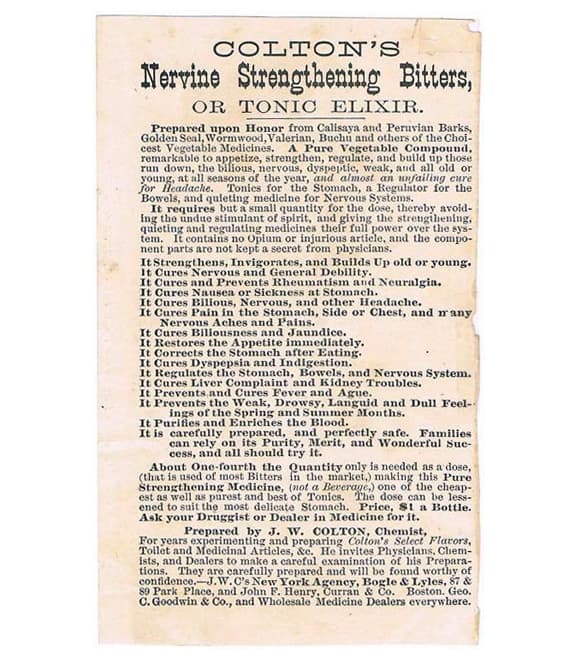
J.W. Coltons Nervine Strengthening Bitters Trade Card – Meyer Collection
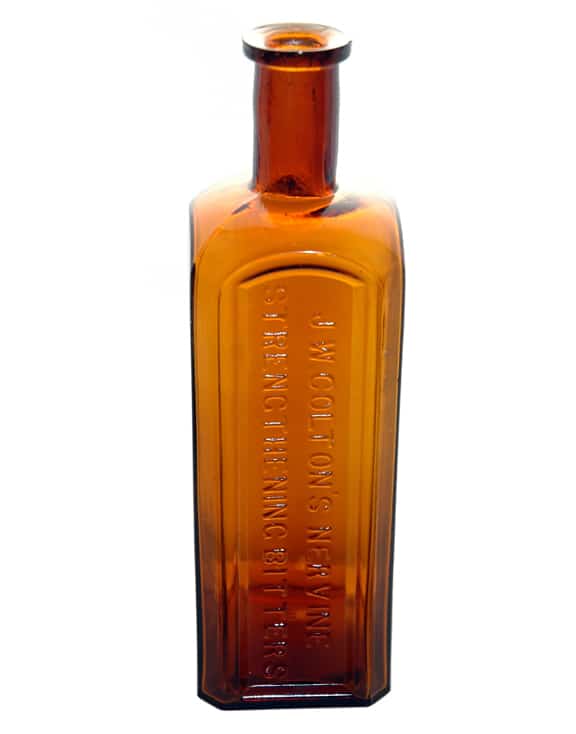
J.W. Coltons Nervine Strengthening Bitters – Meyer Collection
[from Encyclopedia of Massachusetts] John W. Colton, son of Ebenezer and Cynthia (Whitman) Colton, was born in West Springfield, in the part now known as Agawam, in 1832. He attended the public schools of West Springfield Center, and a private school in Springfield, completing his education with a course of study in the Sheffield Scientific School of Yale University.
The drug business early interested him, and for six years he was with the firm of H. and J. Brewer, of Springfield, the firm’s first salaried clerk. After leaving this firm he was for sometime employed by W. H. SchiefFelin & Company, of New York City, but, his health becoming impaired, he left New York and located in Westfield, purchasing the store at the corner of Elm and School streets. His operations were con-
ducted in his own name for a time, but later he admitted a partner, and continued under the name of Colton & Stratton, the business being sold in 1888 to Dewey & Parsons. In 1860 Mr. Colton established the flavoring extract business in which his after life was spent, and his first product was placed upon the market the following year.
In 1873 he built a business block on School street, and a portion of it had housed his flavoring extract business until his death. He had developed this line to a point of great prosperity and wide reputation, and made it his principal business interest always.
Public affairs of local and state importance claimed a share of his time and attention, and his work along these lines was performed public-spiritedly and faithfully. He was a Democrat in political belief, and in 1881 and 1882 represented his district in the State Legislature. During this period he was a member of several important committees, and led in the movement for the repeal of the war tax on savings banks. Mr. Colton was also active in securing for the town of Westfield five thousand dollars a year from the Legislature for a period of five years, this sum to be used in relief work made necessary by the flood of 1878. In purely local affairs he was equally prominent and useful, was a member of the School Board from 1896 to 1899, a director of the Westfield Athenaeum, one of the incorporators of the Woronoco Savings Bank, and vice-president of the Westfield Savings Bank. From 1859 ne was a member of the First Congregational Church, a stalwart supporter of all of its work. In fraternal relations he affiliated with the Masonic order and the Independent Order of Odd Fellows, in the former order belonging to Mt. Moriah Lodge, Free and Accepted Masons, which he joined in 1861, Evening Star Chapter, Royal Arch Masons, and Springfield Commandery, Knights Templar. He was also a charter member of Hampden Council, Royal Arcanum.
John W. Colton was of an admirable type of citizenship, a man who gave liberally of his time and talents for the common good, and who sought no return from the labors thus expended than the consciousness of duty well and thoroughly performed.
John W. Colton married, in 1862, Albina S. Ball, of Chicopee, Massachusetts, who died July 21, 1916. Mr. Colton died January 10, 1907. John W. and Albina S. (Ball) Colton were the parents of: Gertrude Whitman, who married William Irving Barton ; Helen, died aged six months; William B., died aged twenty-four years.
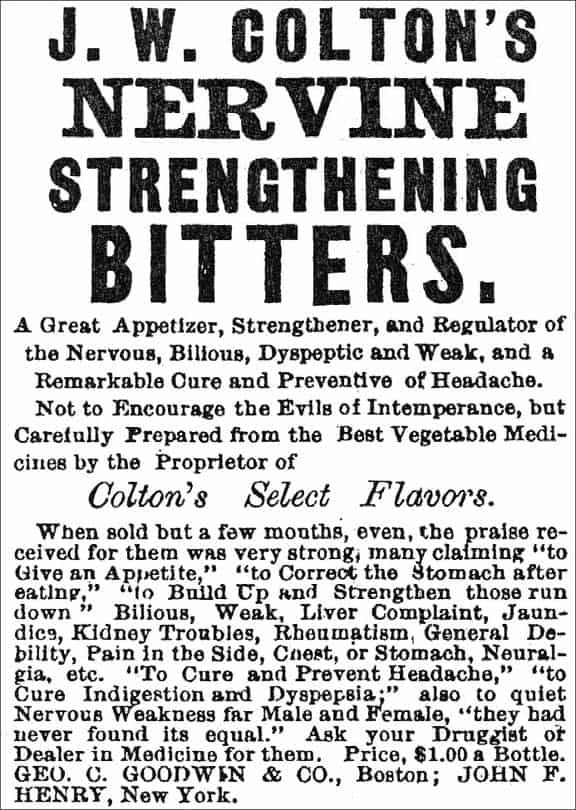
May 1873, J. W. Colton’s Nervine Strengthening Bitters advertisement – Bitters Bottles Supplement

